|
|
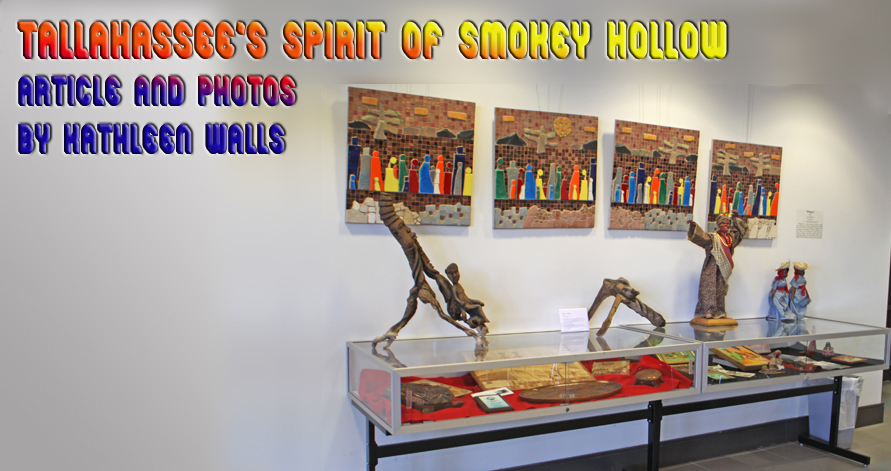
Smokey Hollow
Founded in the 1890s close to downtown,
Smokey Hollow
was home to many of Tallahassee's working class African Americans. It was
a safe comfortable place where neighbors were like
family until the 1960s.Then, as Tallahassee entered the
period of the Civil Right movement. sweeping its reforms
across American, everything changed.
The powers
that reigned, decided that Smokey Hollow needed to be
destroyed as it stood in the way of "urban renewal." The
land was taken through eminent domain and the families
were displaced and scattered.
The wave of equality was sweeping
through Tallahassee during this time. Change had begun
in May of 1956 when Carrie Patterson, a 21-year-old FAMU
junior, and Wilhemina Jakes, a 26-year-old FAMU senior
copied Rosa Parks bold movement and dared to sit in the
white seats of a Tallahassee bus. The students were
arrested sparking a boycott of the Tallahassee bus
system similar to Montgomery's.
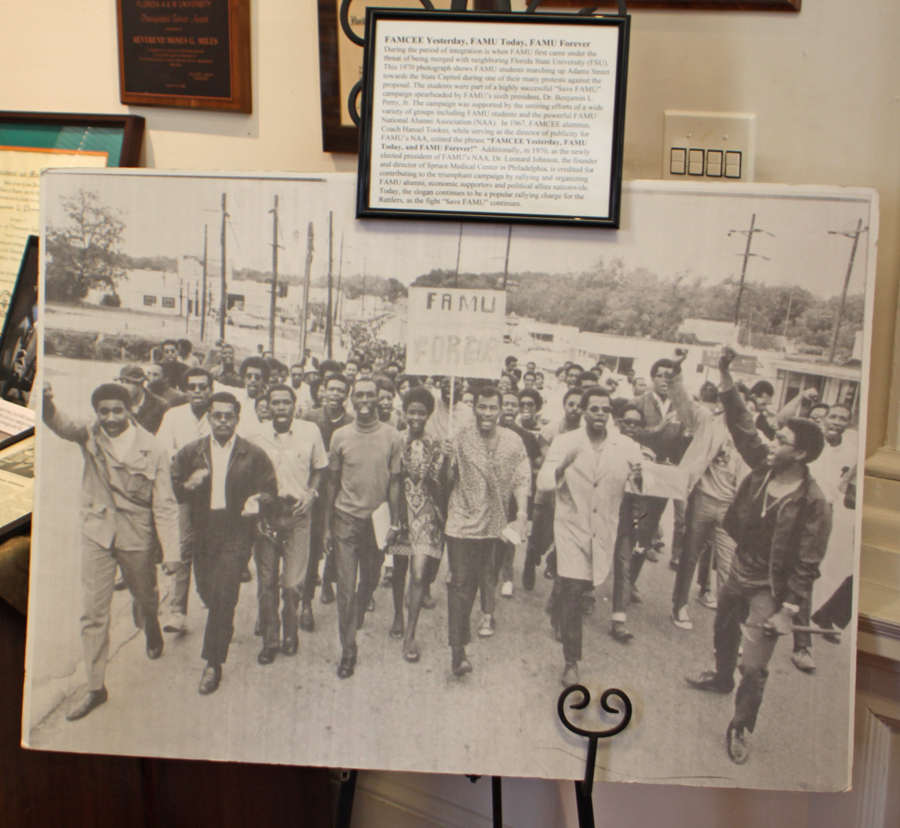 |
| FAMU students protesting
their college being merged with FSU |
This led to
sit-ins at the local Woolworth's and McCrory's lunch
counters beginning in February 1960. Protesters were
arrested and charged with "disturbing the peace." Might
doesn't always triumph over right and the protests
continued. Ten Interfaith Freedom Riders challenged
segregated interstate buses in June 1961 by traveling
via Greyhound from Washington D.C. to Tallahassee. In
Tallahassee they decided to test the airport restaurant
and were arrested there. Their original 60 day sentence
was commuted to four days. They became known as the
Tallahassee Ten.
Tallahassee-Leon County Civil
Rights Heritage Walk
The bravery of these activists
was later honored with the Tallahassee-Leon County Civil
Rights Heritage Walk located on East Jefferson Street.
It's a grouping of 16 panels that tell the story and
list many of the names of the protesters. Well worth a
quick pass to view.
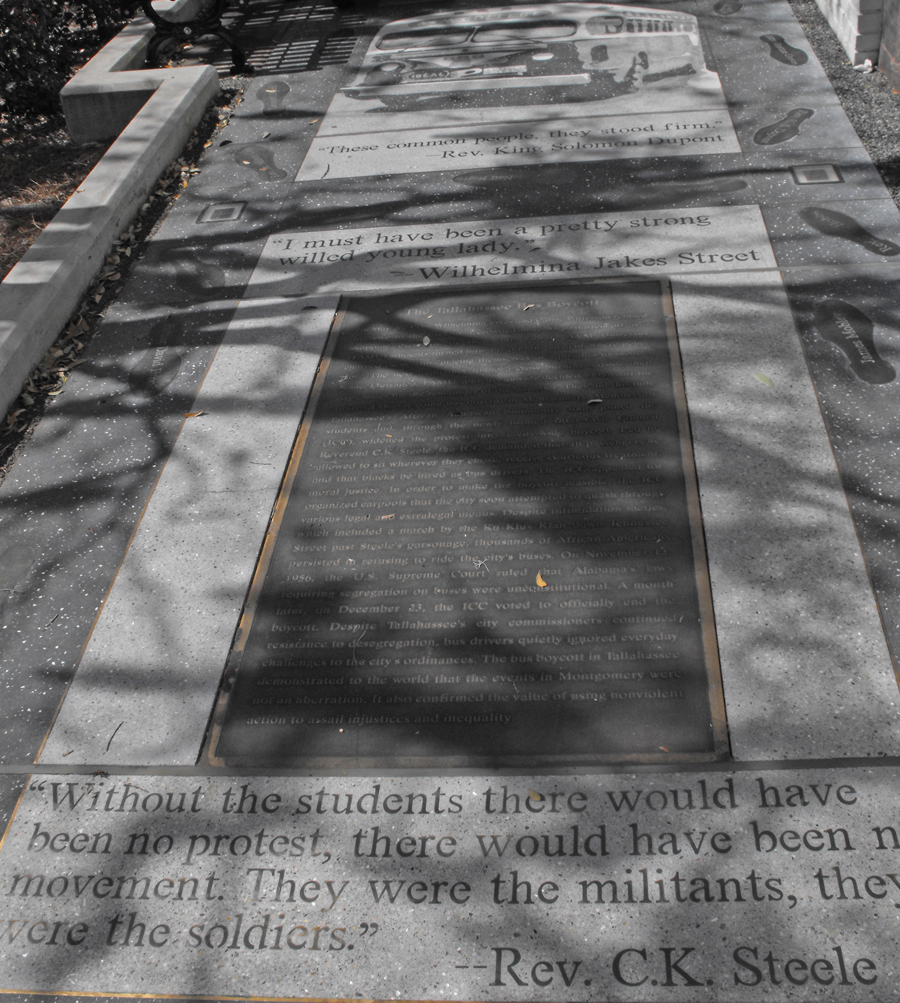 |
| Portion of
Tallahassee-Leon County Civil Rights Heritage
Walk honoring the Civil Rights activists |
Meek Eaton Black Archives
Justice finally prevailed
and in 1971, the Florida Legislature ordered the
creation of a repository to "serve the state by
collecting and preserving source material on and about
African Americans from ancient to present times." From
this Meek Eaton Black Archives was born. This is a
research center as well as a museum. It opened in 1976
in historic Carnegie Library on FAMU's campus. Here you
can find a Civil Rights and Black History exhibits from
Tallahassee as well as across the nation. Serious
scholars can take advantage of their archives and
research materials.
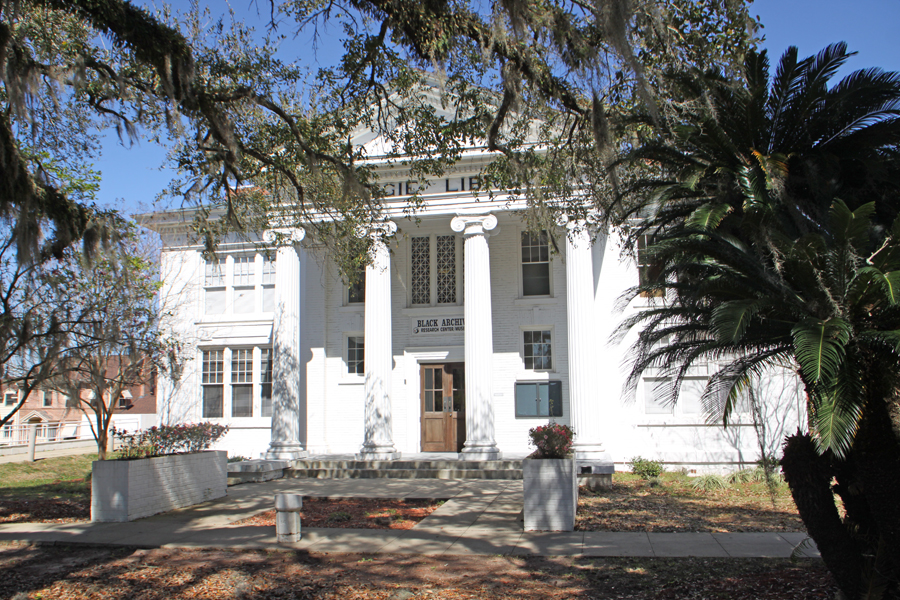 |
| Carnegie Library now
home of Meek Eaton Black Archives |
Ironically when Carnegie
donated the library, the city of Tallahassee refused it
as Carnegie required that Black patrons be allowed to
use the facility. It was then built on what is now the
FAMU campus. Exhibits at the Meek Eaton Black Archives
range from ancient Ethiopian art through slavery days up
to the present. One interesting exhibit shows FAMU
students marching in protest against the possibility of
being merged with FSU and thus losing their identity.
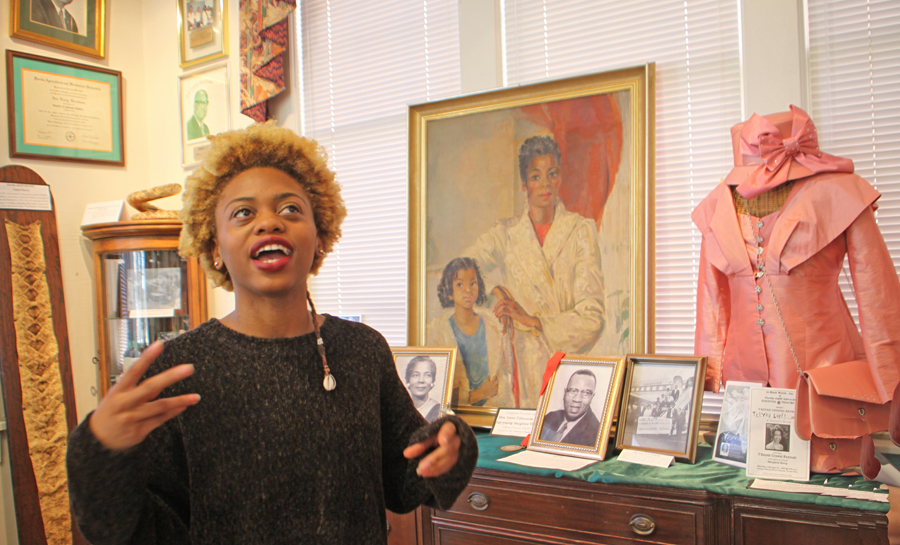 |
| Our guide at Meek Eaton
Black Archives tells of struggle to gain civil
rights |
Another exhibit which emphasizes the role Black
churches played in the civil rights movement is the
recreation of a typical Black Church at the archives.
The artifacts have come for many different churches. The
beautiful stained glass windows come from Bethel
Missionary Church. Rev. C. K. Steele, the pastor, was
one of Tallahassee's most active civil rights workers
during the bus boycotts. Bethel Missionary Baptist
Church was a major target of Ku Klux Klan activity.
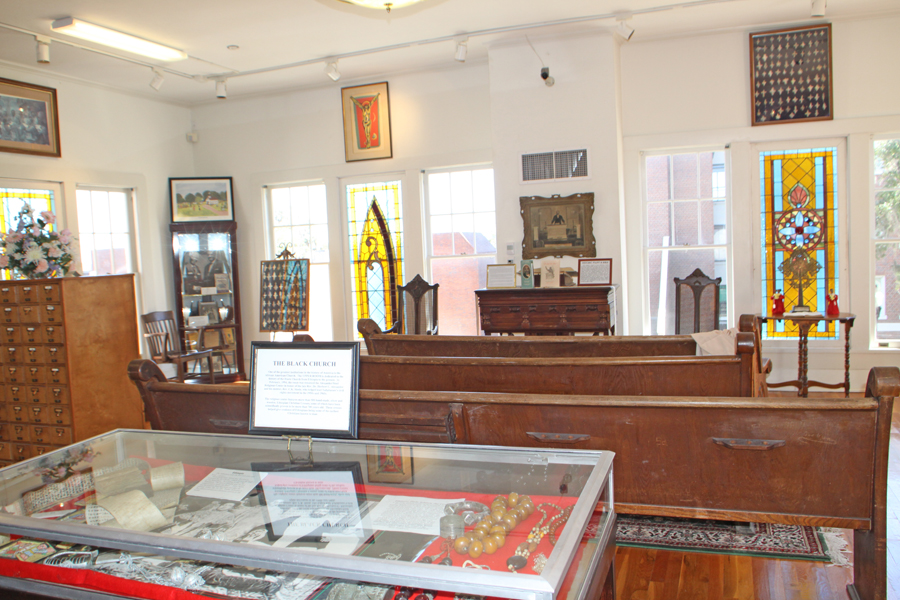 |
| Black church at Meek
Eaton Black Archives |
It was against this background that Sleepy Hollow
was leveled. At time marched on, city officials realized
that these protesters were not criminals but just
citizens demanding their fair rights. So when
Tallahassee opened its newest park, Cascades Park in
2014 on the footprint of the former Smokey Hollow, it
raised a monument to the people who had lived in this
once vibrant community.
Today when you visit the
park, you will find three brick and steel framed
outlines symbolic of the small shotgun houses most
common in the original Smokey Hollow. Inside are photos,
and marking designating how it would have been
furnished.
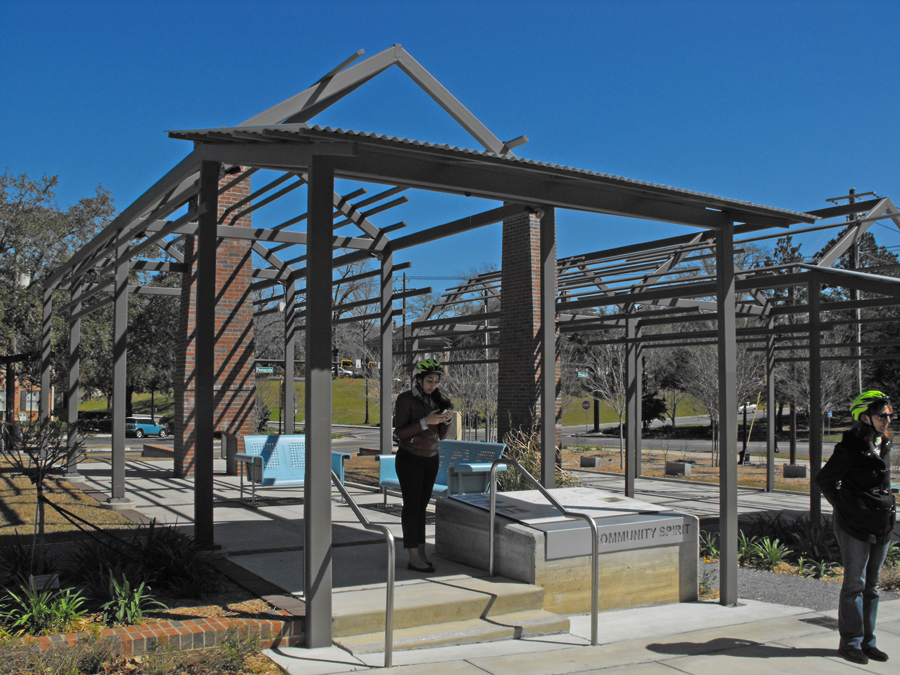 |
| Community Spirit House
at Smokey Hollow |
The neighborhood's community spirit
is represented by the open vegetable and flower gardens
and fruit trees which will be shared with the public.
There is a picnic area and pool. Several hopscotch games
and a playground show how neighborhood children spent
theit free time. Each of the houses are named for a
community value, "Community Spirit," "Family Spirit" and
"Enduring Spirit." A walkway leads to the John G. Riley
House and Museum that was on the outskirts of Smokey
Hollow. The home was built by John G. Riley and has been
restored as a museum honoring Mr. Riley and other
African American who contributed to Tallassee's present
greatness.
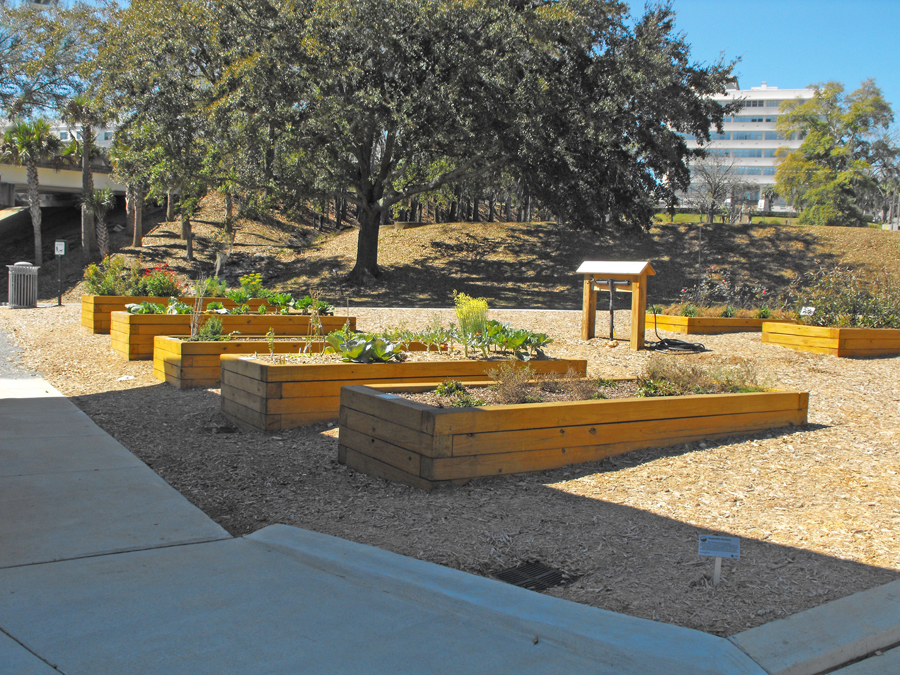 |
| Garden at Smokey Hollow |
Perhaps the enduring spirit that had
revived the spirit of Smokey Hollow can be summed up by
a statement from one of its former residents. "We didn't
really have much, we just had each other."
And
that is what really counts in the long haul. |
For more info:
http://www.tallahassee.com/story/news/local/2015/09/24/smokey-hollow-commemoration-celebrates-lost-neighborhood/72735610/
http://rileymuseum.org/site/about/life-legacy-of-john-g-riley-2/history-of-smokey-hollow-community/
http://famu.edu/index.cfm?MEBA
American Roads and
Global Highways has so many great articles you may
want to
search it for you favorite places or new exciting destinations.
|
![]() Ads fund American Roads and Global Highways
so please consider them for your needed
purchases.
If you enjoy the articles we offer, donations
are always welcome.
Ads fund American Roads and Global Highways
so please consider them for your needed
purchases.
If you enjoy the articles we offer, donations
are always welcome.

|